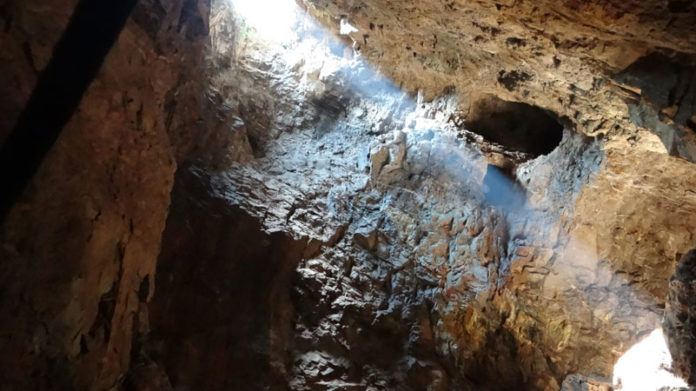
AFTER months spent scouring Africa for new sources of gold production, Pan African may has discovered high grade growth ounces at its Royal Sheba prospect which falls within the mining permit of its Barberton Gold Mines in South Africa’s Mpumalanga province.
“There’s no resource like this anywhere in South Africa,” said Cobus Loots, CEO of Pan African in an interview. “The irony is that we’ve found gold in our backyard without having to pay premiums for takeovers in Africa,” he said.
In an announcement to the JSE today, Pan African said the Royal Sheba prospect contained an estimated 900,000 ounces in gold reserves of which 350,000 oz was accessible through open pit mining at an average grade of 3.81 grams per tonne (g/t). Gold resources totalling 550,000 oz could be mined through underground mining.
There was also potential for adding to the resources number moving eastwards whilst Pan African was also drilling at the nearby New Consort property.
Loots declined to comment on capital required for the project, but he confirmed Royal Sheba represented short-term production, and that it could help lower the company’s total all-in sustaining costs to between $800 to $850/oz.
“Royal Sheba’s opencast orebody has the potential to increase production from our flagship Barberton operations at a very competitive cost, aligned with our strategic positioning as a low cost gold producer,” said Loots in the JSE announcement.
Mining in the Royal Sheba vicinity has a rich heritage. Edwin Bray found gold in Sheba Hills in 1885 which led to the development of the Golden Quarry orebody. According to Pan African this triggered ” … a gold rush that culminated in the establishment of a number of mines along the Sheba Fault Shear Zone, within the Barberton Mountain area.
“The Sheba Fault Shear Zone has been a prolific gold-bearing geological structure, producing numerous gold deposits and mines within the Pan African stable, notably the existing underground Sheba Mine and, more recently, the re-emergence of the Royal Sheba Project,” it said in an announcement.
Royal Sheba was mined until 1996 until economic conditions forced its suspension. A total of 280,000 tonnes of ore was mined at a grade of more than 4g/t, resulting in over 37,000 ounces of gold being produced.
Were Pan African to establish Royal Sheba as an operating mine again, it would represent another advance following a sometimes painful 24 month period in which it has shifted the composition of production towards tailings retreatment. It commissioned Elikhulu, a process plant near Evander Gold Mines where underground mining was mothballed at the cost of some 1,700 jobs.
Production for the 2018 financial year ended June 30 came in at 160,421 oz which compared to previous guidance of between 157,000 to 160,000 oz. Of this Barberton Mines produced 90,628 oz which was slightly above its target of between 90,000 and 91,000 oz. The mine had a strong second half to the year in which it mined 50,017 oz.








